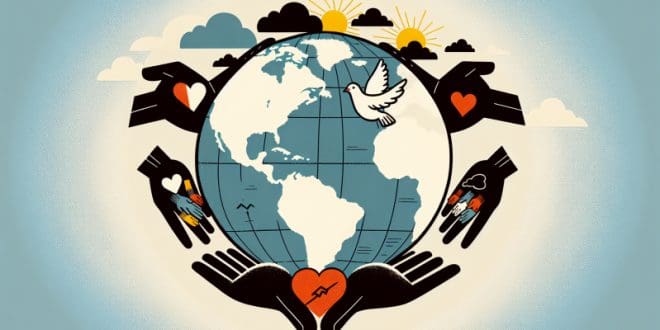As guardians of philanthropic efforts, we at Grants Club are keenly aware of the delicate balance that must be struck between the benevolent intentions of our donors and the urgent needs of conflict zone beneficiaries. The realm of donations and grants within these tumultuous regions is fraught with moral quandaries and strategic complexities that challenge even the most seasoned of nonprofit professionals. In this deep dive, we explore the ethical landscape shaped by the intersection of donor desires and on-the-ground necessities.
The philanthropic world greets altruism with open arms, but the path to responsible aid is not always clear. History is laden with examples where well-intentioned aid has, instead of quelling conflict, inadvertently added fuel to the fire. One such instance is the aid provided during the Somalia conflict in the 1990s, where relief supplies were commandeered by warlords, effectively strengthening their control and prolonging the strife.
The question that then arises is how do organizations navigate these treacherous waters? It begins with a deeper understanding of donor intent. Donors often have specific visions for the deployment of their contributions, visions crafted from personal convictions and beliefs. However, these well-intended directives may not always match the dynamic and complex realities of conflict zones, where flexibility and adaptability are crucial.
Addressing these issues demands a multi-faceted approach. Firstly, it requires rigorous vetting and auditing processes to ensure aid is not being misused. Secondly, constant, on-ground communication with local entities is vital to adapt strategies that match the real-time need of the beneficiaries, considering the fluid nature of conflict dynamics. Finally, educating donors about these challenges is essential for aligning expectations with actualities.
Nonprofits serve as the critical intermediaries, expected to uphold the will of the donor while simultaneously ensuring the aid is effectively contributing to conflict resolution and not exacerbation. This calls for a robust ethical framework within which charities operate, one that includes transparency, accountability, and a commitment to the highest standards of integrity.
We, as part of the Grants Club community, must diligently work towards the end goal of fostering peace and providing relief in a manner that both honors donor intent and maximizes positive impact on the ground. Our strategies must include thorough impact assessments and conflict-sensitive approaches to aid distribution. It is a delicate art, balancing respect for donors with the pressing, often unpredictable needs of those caught in the crossfire of conflict.
As stewar
ds of benevolence, we invite you to reflect on this intricate ballet of ethical decision-making. Join us in a conversation that not only critiques past efforts but also looks forward to shaping a future where the altruism of donations is wielded wisely to mend rather than inadvertently fracture troubled regions.
In conclusion, the ethics of altruism in conflict zones is not a topic to be taken lightly. It requires an ongoing dialogue, a commitment to learning and re-evaluation, and most importantly, a steadfast dedication to the principled distribution of aid that recognizes the humanity and the complexities inherent in every beneficiary. Embrace this thought-provoking journey with us, as we navigate the moral landscape of helping those in dire need without causing unintended harm.
 Grants Club Community
Grants Club Community







